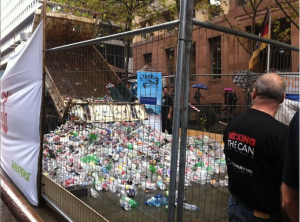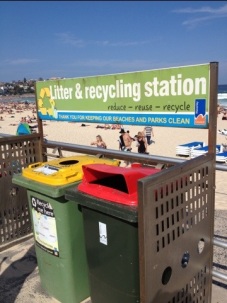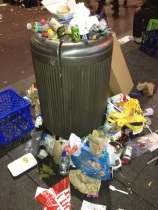Monetary incentives can be a very effective way to incite behaviour change. The success of container deposit legislation (CDL) in reducing littering behaviour and increase recycling rates is a great example of this.
A container deposit scheme involves collecting a monetary deposit on drink containers at point of sale. When the container is returned to a redemption centre or the seller, so is the deposit. Container deposit legislation (CDL) exists in many countries in Europe (and elsewhere) and has existed in the state of South Australia since 1977. There are many benefits to having of a container deposit scheme, including reducing littering and waste that ends up in landfill or polluting the ground or ocean, increasing recycling rates which reduces need for virgin materials, and helping the homeless find a way to get some extra money by “hunting” for and returning discarded containers. According to EPA South Australia, 98% of South Australians are support the CDL state-wide and nationally, believing it to be an effective way to reduce rubbish and increase recycling. CDL was introduced in the Northern Territory in 2012, but was repealed when CocaCola and Schweppes sued the state. NSW is facing a similar problem.
Over the last few months, citizens of Sydney (and all over the state) have been raising quite a fuss about getting a 10-cent container deposit scheme implemented in NSW. A 10-cent refund is supported by over 80% of the community (Clean Up Australia) and is one of the most effective ways to address beverage container waste and littering. However, big guns like Coca-Cola and Schweppes have been fighting against them, arguing that CDL isn’t the best or only way to reduce waste. Seriously? We’ve been trying other methods and they aren’t really working, so what’s the problem? The brands are big enough and so well-known that something like a container deposit surely can’t hurt their image too much. In fact, it might help it.
The Boomerang Alliance, made up of 27 Australian environmental groups campaigning for recycling (including Take 3 and Responsible Runners), has been adamantly supporting implementation of CDL. A few weeks ago, they held a demonstration in Martin Place that involved dumping massive amounts of bottles and cans all over the square in order to show people how much we waste in Australia. The fact that South Australia’s recycling rate is around 85%, whereas NSW is around 50%, is a pretty good indicator that CDL is, in fact, effective. Similar campaigns are underway all around Australia, so hopefully progress will be made soon.





